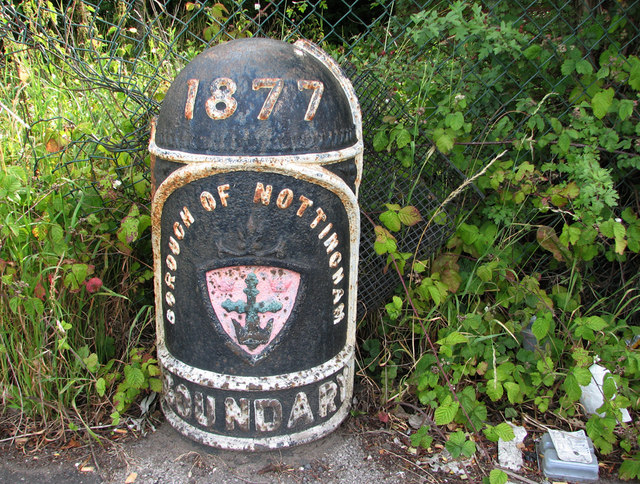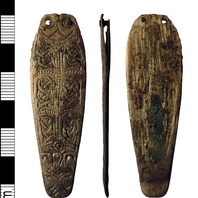
Description
Nottingham
Nottingham, Nottinghamshire
Nottingham is one of the Five Boroughs of the Danelaw. The place-name is comprised of three Old English elements: the male personal name Snot, ingas ‘people of, the people called after’ and ham ‘a village, a village community, a manor, an estate, a homestead’. Thus the name means ‘Homestead/village of Snot’s people’.
It is likely that the same man or people gave his name to the adjacent Sneinton.
There is an older British name for Nottingham, Tigguocobauc ‘house of caves, cavy house’, alluding to the sandstone caves of Castle Hill. However, there is no other record for this name outside of Asser’s reference for 868.
According to the Anglo-Saxon Chronicle, Nottingham was occupied by the Great Heathen Army in 867 and remained under Scandinavian control until 918, when it was occupied by Edward the Elder.
The influence of these Vikings can be seen in the city of Nottingham’s street names. The Old Norse element gata ‘path, way, road’ can be found in street names such as Barker Gate ‘street of the barkers or tanners’, Castle gate ‘street leading to the castle’, and Fisher Gate ‘street of the fishermen’.
Ascribed Culture
Collection
- Viking Names
Keywords
- Great_army, Nottingham, Nottinghamshire, place-name
Further information
This object is related to
Nottingham, Nottinghamshire.
Find out about Nottingham, Nottinghamshire.
Acknowledgements
Image © John Sutton, via Geograph, CC BY-SA 2.0
References
Michael Swanton trans. and ed. The Anglo-Saxon Chronicle, London: Phoenix Press (2000), pp. 69-71; 103-4.
Gillian Fellows Jensen, Scandinavian Settlement Names in the East Midlands. Copenhagen: Akademisk Forlag (1978), pp. 1, 4-5.
J.E.B. Gover, Allen Mawer and F.M. Stenton, The Place-Names of Nottinghamshire. English Place-Name Society Volume XVII (1940), pp. 13-22.

